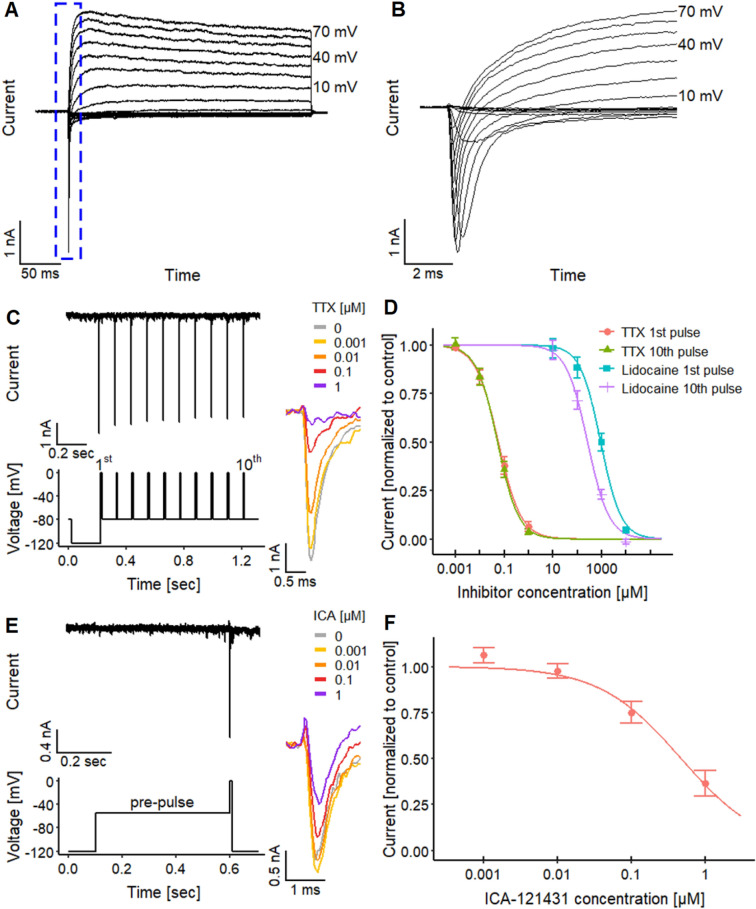Fig. 4.
Electrophysiological characteristics of NaV channel. a, b Manual patch clamp recordings of a activation of voltage-gated inward and outward currents stimulated by different voltage steps with b a magnification of the inward current (note: different time axis). c–f Automated patch clamp recordings for a pharmacological characterization of voltage-gated Na+ (NaV) channels, using c, d TTX and lidocaine to investigate the use-dependent and acute inhibitory effects and e, f ICA-121431 to narrow NaV channel subtypes down. e Exemplary trace of the inward current triggered by the pulse protocol with ten closely spaced test pulses. Traces on the right depict the concentration-dependent effect of TTX on the 1st pulse. d Concentration–response curves yielded pIC50 values of 7.23 ± 0.05 (1st pulse) and 7.26 ± 0.05 (10th pulse). Lidocaine had pIC50 values of 3.03 ± 0.07 (1st pulse) and 3.57 ± 0.06 (10th pulse). The pIC50 values for lidocaine are significantly different, unlike the pIC50 values of TTX. e To ensure a selective effect of ICA-121431, measurements need to be performed under conditions where 50% of the NaV channels are inactivated (McCormack et al. 2013). This was achieved by the application of a prepulse to − 55 mV before the stimulus, the determined V50 value for steady-state inactivation in these cells (Fig. S5F). Traces on the right depict the concentration-dependent effect of ICA-121431. f Effect of ICA-121431 with a pIC50 value of 6.33 ± 0.10. Detailed data on n numbers are found in table S4

